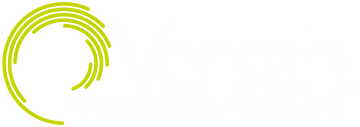Overview:
The anterior maxillary wall is slightly more concave. The pathway is totally intra-maxillary with an intra/extra-sinus approach. A tunnel osteotomy is created through the alveolar crest, into the sinus internal lateral wall, to slightly come out through that lateral wall and then re-enter again as a second tunnel osteotomy into the sinus to come out through the body of the zygoma.

ZGO I: Intra-Maxillary Intra/Extra Sinus: The anterior maxillary wall is slightly concave. The pathway is intra-maxillary with a mostly intra-sinus path.

ZGO II: Intra-Maxillary Extra/Intra Sinus: The anterior maxillary wall is slightly more concave than ZGO I. Therefore, it follows the same ZGO I surgical principle with pathway that is intra-maxillary but with a mostly extra sinus path.
Step 1:
The tunnel osteotomy is initiated with the Universal Densah® pilot drill through the alveolar crest in clockwise (CW) mode to reach the floor of the sinus. Then the Universal Densah® Burs are used in a consecutive increasing order of 2mm, 2.3mm, 3mm, & 3.3mm in the counterclockwise (CCW) mode to preserve and widen the crestal osteotomy and initiate the entry into the sinus lateral wall. This would achieve preservation of the sinus membrane and Osseodensification of the alveolar bone.

Step 2:
Using the appropriate length ZGO Densah® pilot drill (65mm or 90mm) depending on the patient’s anatomy and size, in CW mode, enter the prepared crestal tunnel osteotomy to come out through the lateral sinus wall to enter again, through another tunnel osteotomy, into the inferior surface of the zygoma, then through the body of the zygoma, to exit the superolateral surface of the body of the zygoma.

Step 3:
After the pilot osteotomy, use the appropriate length ZGO Densah® Burs (65mm or 90mm) depending on the patient’s anatomy and size. Starting with Densah® Bur ZT 1525, widen the crestal osteotomy in CCW mode entering the sinus cavity to come out through the lateral sinus wall to enter again, through another tunnel osteotomy, switch to CW mode as needed to enter into the inferior surface of the zygoma, through the body of the zygoma and exiting the superolateral surface of the body of the zygoma.

Step 4:
The zygoma hardness and implant diameter will determine the final ZGO Densah® Bur diameter i.e.; ZT2030, ZT2535, or ZT3040 The ZGO Densah® Burs best to be utilized CW/CCW as needed based on bone density at 800-1500rpm with copious irrigation. 1) Clockwise (CW) cutting mode for denser bone 2) Counterclockwise (CCW) densifying mode in softer bone 3) A combination of CW & CCW using the Densify- Preserve after Cut (DAC) protocol for intermediate bone hardness

Step 5:
The zygomatic implant is then placed. Although the zygomatic implant can be seen through the anterior maxillary wall, most of the implant body has an intra-sinus path. In ZGO I and ZGO II the implant contacts bone at:
1) The alveolar crest.
2) The internal sinus wall.
3) The lateral sinus wall.
4) The body of the zygoma



* Data on file, visit versah.com/our-science/ for Zygomatic Implant studies
Clinician judgement and experience should be applied in conjunction with this clinical practice suggestive use protocol.
10532 REV04 Updated: 11/2023
